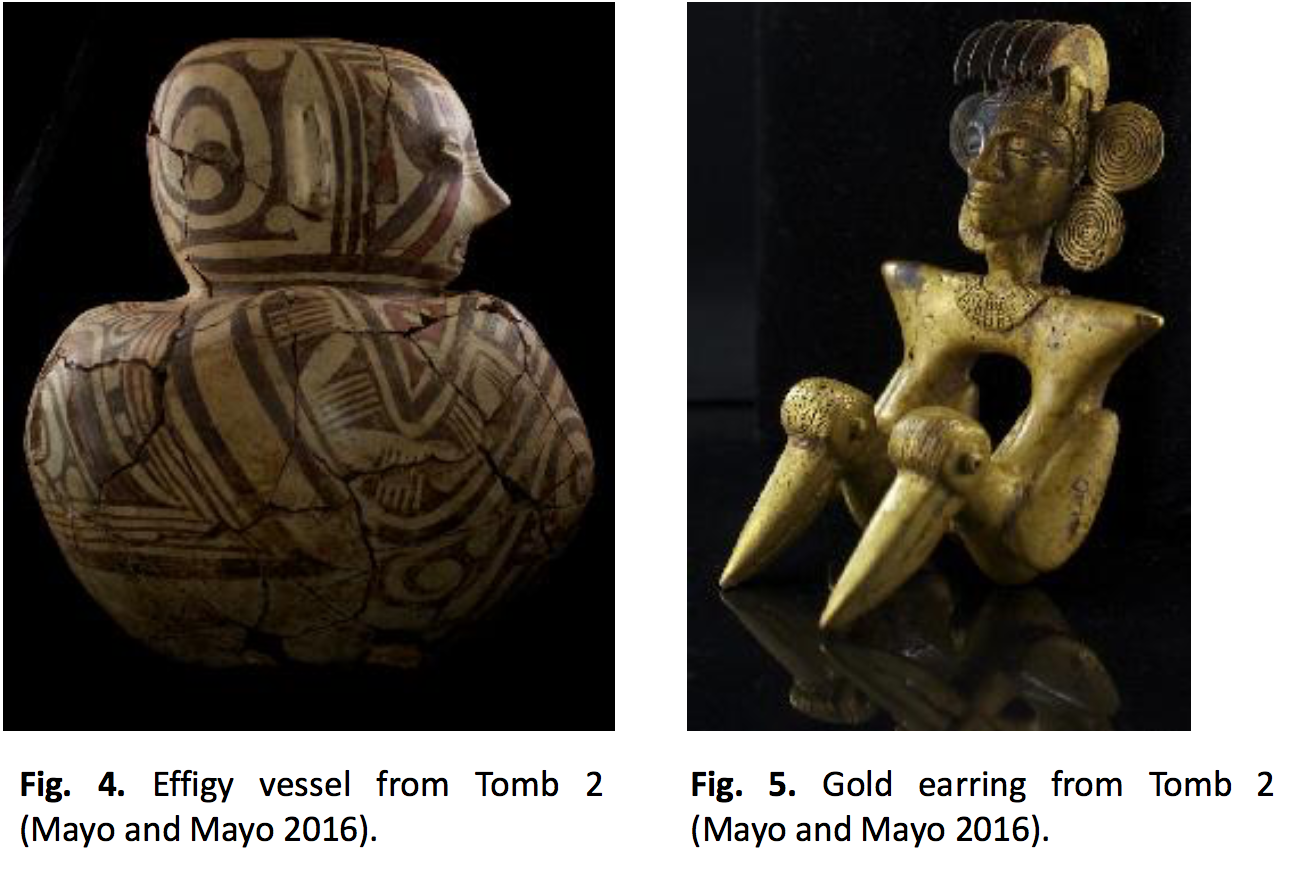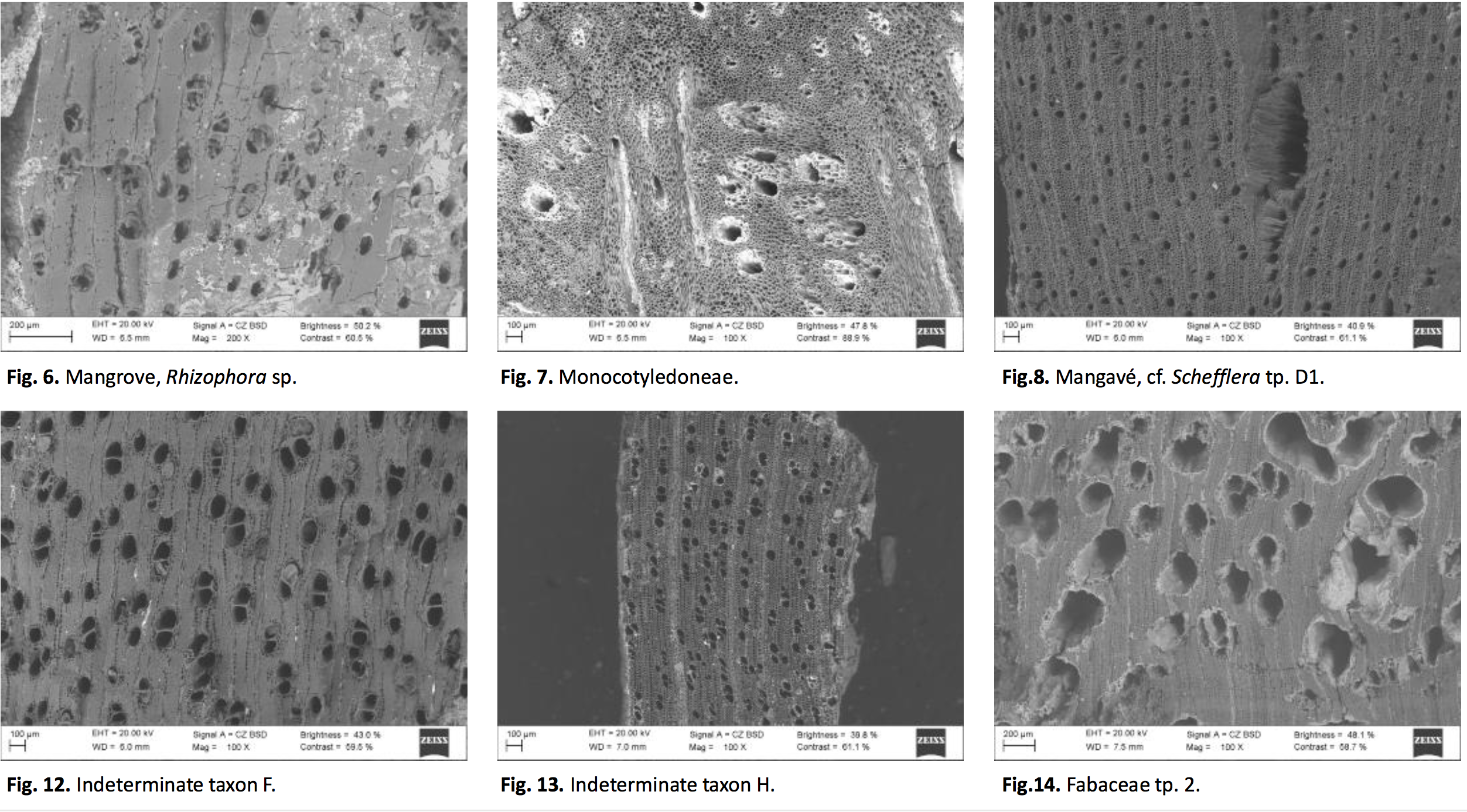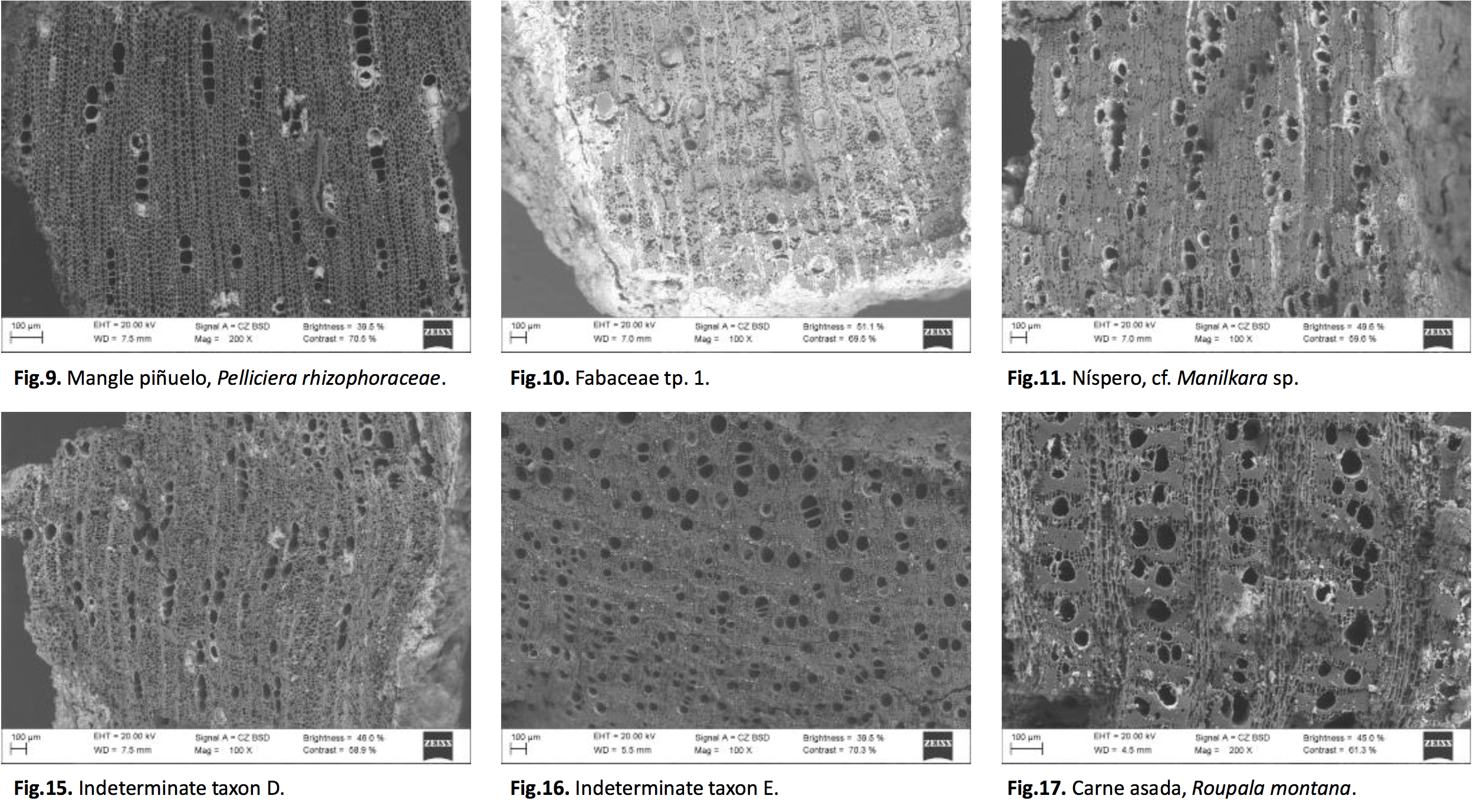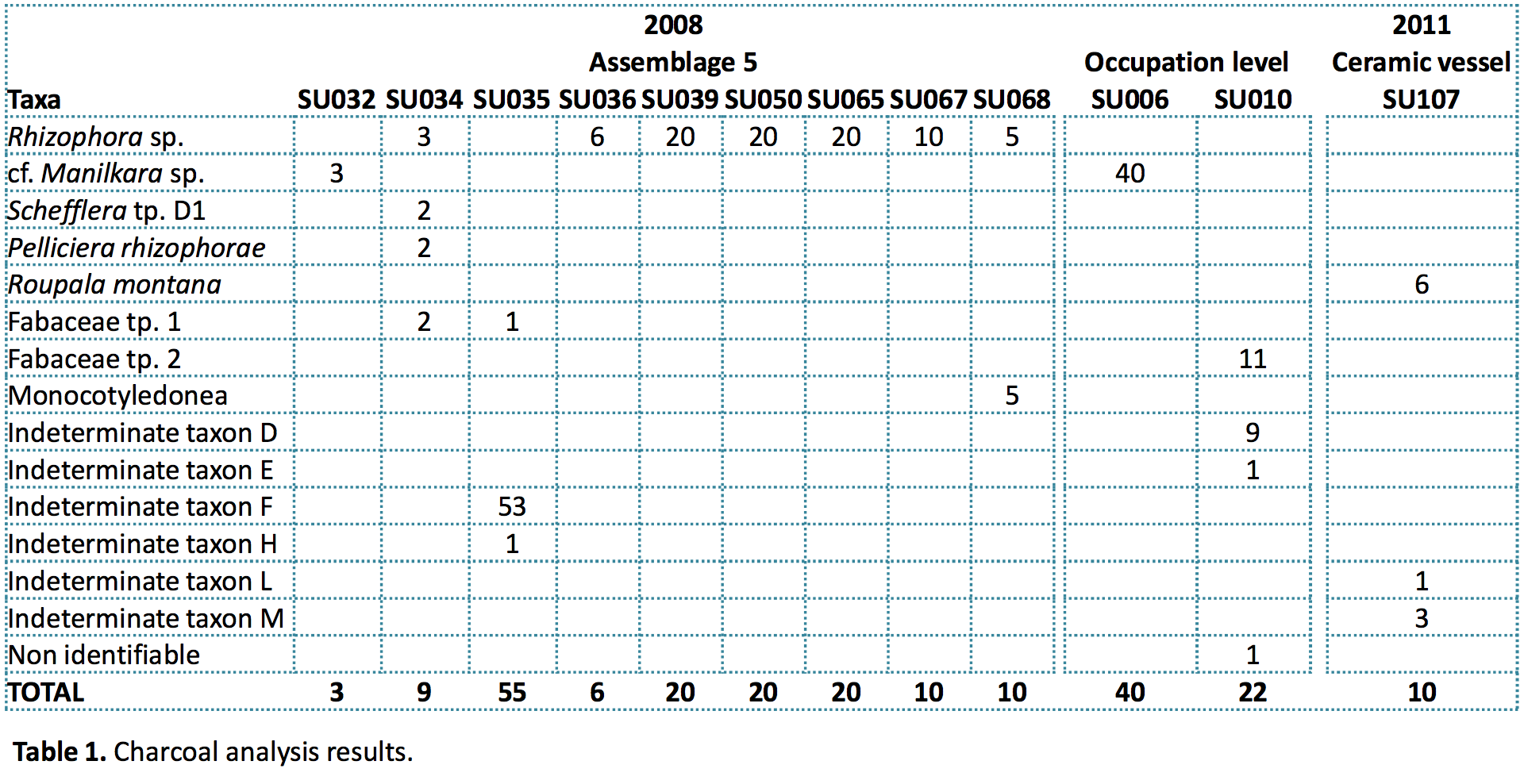Poster presentado en el Congreso TiBE 2016 TROPICAL BIODIVERSITY, November 28-29, 2016, CIBIO-InBIO, Vairão , Portugal, https://cibio.up.pt/tibe/details/tibe2016
PRE-COLUMBIAN USES OF FOREST RESOURCES IN FUNERARY CONTEXTS DATED FROM 750 TO 1020 cal AD: ARCHAEOBOTANICAL ANALYSIS FROM EL CAÑO (PANAMÁ)
María Martín Seijo (1, 2), Julia Mayo Torné (3), Carlos Mayo Torné (1,3,4)
(1) GEPN-AAT. Grupo de Estudos para a Prehistoria do NW Ibérico-Arqueoloxía, Antigüidade e Territorio. (GI-1534). Universidade de Santiago de Compostela.
(2) InBio- Research Network in Biodiversity and Evolutionary Biology (Associated Laboratory) / CIBIO–Research Center in Biodiversity and Genetic Resources / University of Porto, Porto, Portugal
(3) Centro de Investigaciones Arqueológicas del Istmo, Fundación El Caño.
(4) Dirección Nacional de Patrimonio Histórico.
Introduction
El Caño site (Coclé Province, Panama) is located at 50 m asl in an aluvial plain which is flooded periodically by the Río Grande that flows into the Parita Bay (Fig. 1). The site is in an area of tropical climate of savannah (Awi). The vegetation that grows currently in the surroundings of El Caño is highly affected by human activities (Fig. 2), but potential vegetation in this area is dry tropical forest and mangrove estuaries.
Several of the most important pre-Columbian sites of the Panama isthmus are placed in the immediate vicinity of the Río Grande fluvial valley, comprising funerary complexes as Sitio Conte (Lothrop 1937), Los Olivos and El Caño (Mayo and Carles 2015; Mayo and Mayo 2013). The archaeological data from all these three sites seems to indicate that the “Río Grande chiefdom” was the most complex of the Gran Coclé cultural region.
Archaeological background
El Caño is a complex site which includes rich tombs of high-ranking individuals. The funerary rite developed by the chiefdoms of the Parita Bay has been one of the key issues of study and discussion about social hierarchies in the Americas. The characteristics of these funerary rites has been known through the archaeological excavations carried out at Sitio Conte (Linares 1977; Lothrop 1934, 1937) and El Caño (Mayo and Carles 2015; Mayo and Mayo 2013, 2016) and also by the ethnohistorical data retrieved from the texts written by Pascual de Andagoya, Gonzalo Fernández de Oviedo and Gaspar de Espinosa.
Chiefdoms of the Parita Bay presents a marked social hierarchy and is characterized by wealth accumulation in the hands of few individuals. This is clear in the funerary contexts of El Caño where hundreds of sumptuary artifacts made part of the grave goods associated to high-ranking individuals (Figs. 3, 4 and 5). Wooden objects made probably part of the grave goods such as duhos, arrow shafts or atlatls among others; even structures associated to the burials were probably made using perishable materials.


Materials and methods
Archaeobotanical assemblages recovered during the field seasons of 2008 and 2011 have been studied. The strategy of recovery included bulk and grab samples. In 2008 most of the charcoal fragments (71.2%) were recovered from the Assamblage 5 which integrate several cut features (pits and post-holes); one of the charcoal fragments recovered from Stratigraphic Unit 050 was radiocarbon dated from 631 to 770 cal. AD (Beta-244670, 1340±40) (Figs. 18 and 19). The rest of charcoal was recovered dispersed in a occupation level. The sample collected by hand-picking during the field season of 2011 was recovered from SU107 inside Tomb 2 and was directly associated to a broken ceramic vessel. This sample was radiocarbon dated from 9th to 11th centuries cal. AD. 225, charcoal fragments were observed in the reflected-light microscopy. Taxonomic identification was done according to the specific anatomical patterns observed on the three sections of wood (cross, tangential and radial). Identification keys available on wood anatomy databases (InsideWood.2004-onwards; Richter and Dallwitz, 2002) and specialized bibliography were used. Finally, they were also checked with the specimens of our reference collection of tropical woods.




Results and discussion
14 taxa have been identified (Table 1, Figs. 6 to 17). The distribution of the taxa varies greatly. In the samples recovered from Assemblage 5 Rhizophora sp. is the main taxa regarding number of fragments and presence in different stratigraphic units. Differences observed between units could be related with different uses of wood resources in relation to the funerary rite. Charcoal recovered from features grouped as Assemblage 5 were probably remains of the carbonised wood posts, most of them made of Rhizophora sp. trunks. These posts were probably the remains of a perishable structure built to cover the burials (Fig. 20). The presence of Monocotyledonea could be consequence of the use these plants for roofing.
The presence of Roupala montana wood inside a ceramic vessel is probably indicative of its burning during burial of 19 individuals inside Tomb 2. Species of genus Roupala are known by their meat odor and this attribute probably conditioned the selection of this wood for burning.
The species identified attested to the exploitation of diverse plant communities, mainly mangrove forests (Rhizophora sp., Pelliciera rhizophorae) and tropical dry forests (Manilkara sp., Schefflera sp., Roupala montana and Fabaceae). A complex labour organisation –wood extraction, transport, manufacture, use and consumption- was probably developed within the chiefdoms of the Gran Coclé cultural region.
References
Insidewood. 2004-onwards http://insidewood.lib.ncsu.edu/search (2015 August).
Linares, O.F .1977. Ecology and the arts in ancient Panama: on the development of social rank and symbolism in the central provinces. Studies in Pre-Columbian art and archaeology, número17: pp. 1-86.
Lothrop, S. K. 1934. Archaeological Investigation in the Province of Coclé, Panamá. American Journal of Archaeology 38:207-211.
Lothrop, S. K . 1937. Coclé: An Archaeological Study of Central Panama. Historical Background Excavations at the Sitio Conte: Artifacts and Ornaments. Part 1. Memoirs of the Peabody Museum of Archaeology and Ethnology 7, Cambridge.
Mayo,J.;Carles,J.A.(eds.) 2015. Guerreros de Oro:Los Señores de Coclé. Ed.Caribe,Panamá.
Mayo, J.; Mayo, C. 2013. El descubrimiento de un cementerio de élite en El Caño: indicios de un patrón funerario en el valle del Río Grande, Coclé, Panamá. Arqueología Iberoamericana 20:3-27.
Mayo, J.; Mayo, C. (eds.) 2016. Repositorio de Datos del Proyecto Arqueológico El Caño. Centro de Investigaciones Arqueológicas del Istmo & Fundación El Caño, Panamá http://oda-fec.org/nata (2016 November)
Richter, G. y M. Dallwitz 2002. Commercial timbers: descriptions, illustrations, identification, and information retrieval. http://biodiversity.uno.edu/delta/wood/es (2015 August).
Acknowledgements
Fundación El Caño wants to thank INAC-Instituto Nacional de Cultural and SENACYT (Secreataría Nacional de Ciencia y Tecnología for their economic support. María Martín Seijo expresses thanks to CIBIO–Research Center in Biodiversity and Genetic Resources for its assistance and support.













